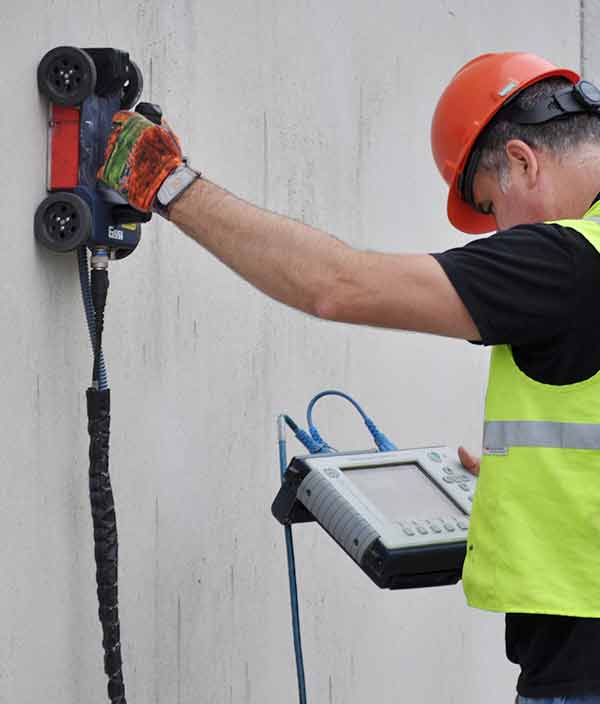The Advantages of RainierGPR Concrete Scanning for Construction Projects
The Advantages of RainierGPR Concrete Scanning for Construction Projects
Blog Article
Exploring the Secret Advantages of Concrete Scanning in Construction Projects
In the world of contemporary construction practices, the use of concrete scanning technology has actually emerged as a critical tool for making sure task efficiency and structural honesty. From enhancing security measures to precisely spotting utilities hidden under the surface, the benefits of concrete scanning are diverse. RainierGPR Concrete Scanning.
Enhanced Security Actions
Making use of innovative concrete scanning technology enhances precaution on building and construction websites by providing accurate detection of potential risks concealed underneath the surface area. This modern technology enables construction teams to identify rebar, channels, post-tension cable televisions, and various other blockages prior to excavation or boring, substantially lowering the threat of crashes. By determining these elements precisely, workers can avoid harmful vital structural elements, therefore avoiding injuries, delays, and expensive repair work.
Additionally, concrete scanning plays an essential role in making certain the integrity of existing structures throughout improvements or expansions. By finding weak points, gaps, or wear and tear within concrete aspects, engineers can attend to these problems proactively, improving the overall security and longevity of the building. This proactive method not only alleviates the threat of structural failures however additionally decreases the possibility for crashes caused by unforeseen structural shortages.
Basically, the application of concrete scanning innovation serves as an aggressive precaution that safeguards both building employees and the structural integrity of buildings, eventually adding to the total success and effectiveness of building tasks. - RainierGPR Concrete Scanning
Accurate Discovery of Utilities
Concrete scanning modern technology facilitates precise recognition of underground energies, boosting building site security and efficiency. Precise discovery of utilities is critical in building jobs to stop costly damages, job hold-ups, and most importantly, make sure the safety and security of workers and the public. By making use of innovative scanning technologies such as ground-penetrating radar (GPR) and electromagnetic induction, building and construction groups can map out the location of buried pipes, wires, and various other utilities with high levels of accuracy.

Time and Price Performance

Concrete scanning modern technology enables building and construction teams to properly locate rebar, post-tension wires, and other ingrained things within concrete structures. This specific info aids in avoiding pricey mistakes visit site such as unexpected damage to important elements throughout exploration, cutting, or coring tasks. Additionally, by determining possible risks ahead of time, the requirement for pricey repair work or remodel due to problems can be decreased, leading to cost financial savings for the project.

Additionally, the capacity to swiftly and precisely detect utilities under the surface without triggering any damages not only conserves time but additionally avoids expensive disturbances to existing infrastructure. On the whole, the moment and expense efficiency advantages of concrete scanning make it a vital tool for improving construction project monitoring and implementation.
Preservation of Structural Honesty
Maintaining the structural stability of structures and infrastructure is vital in making certain long-term stability and security. Concrete scanning plays a critical role in this preservation process by enabling building experts to identify potential threats to the structural integrity of a building or facilities before they intensify right into significant issues. With the usage of innovative scanning innovations such as ground-penetrating radar (GPR) and electromagnetic induction, building groups can non-invasively examine the problem of concrete frameworks, find rebar, post-tension cable televisions, and various other embedded components, and recognize any type of voids, fractures, or degeneration within the concrete.
Improved Task Planning
In order to guarantee the effective implementation of building and construction jobs, meticulous interest to detail and comprehensive planning are important parts that stem from a detailed understanding of the structural problems identified with concrete scanning. Enhanced project preparation, helped with by concrete scanning, permits construction groups to preemptively deal with possible challenges, designate resources a lot more efficiently, and establish practical timelines. By precisely recognizing the location of rebar, post-tension cords, and helpful site other embedded things within concrete structures, job supervisors can develop a lot more specific building strategies that decrease the danger of costly errors or hold-ups. In addition, the data acquired from concrete scanning makes it read review possible for stakeholders to make informed decisions relating to architectural modifications, improvements, or expansions, resulting in smoother task changes and enhanced general job end results. Ultimately, integrating concrete scanning right into the task planning phase boosts control among staff member, cultivates positive analytical, and adds to the successful shipment of building and construction projects within budget plan and routine restraints.
Final Thought
Finally, concrete scanning supplies many benefits in building jobs. By enhancing precaution, properly detecting energies, enhancing time and expense effectiveness, protecting structural honesty, and helping in project planning, concrete scanning shows to be an essential tool for successful job implementation. Its capacity to reduce risks, increase effectiveness, and guarantee task integrity makes it a vital property for building and construction specialists.
In the world of contemporary construction techniques, the use of concrete scanning technology has actually arised as a crucial tool for making sure project effectiveness and structural stability.Concrete scanning modern technology enables building and construction teams to precisely situate rebar, post-tension cables, and various other ingrained objects within concrete structures. Via the use of sophisticated scanning modern technologies such as ground-penetrating radar (GPR) and electromagnetic induction, building groups can non-invasively assess the condition of concrete frameworks, locate rebar, post-tension cable televisions, and various other ingrained elements, and identify any type of gaps, splits, or degeneration within the concrete.
In order to make certain the successful execution of building tasks, meticulous interest to information and extensive preparation are important elements that stem from a detailed understanding of the architectural problems identified through concrete scanning. Inevitably, incorporating concrete scanning into the job planning stage boosts coordination among team members, cultivates proactive problem-solving, and contributes to the successful shipment of building jobs within spending plan and schedule constraints.
Report this page